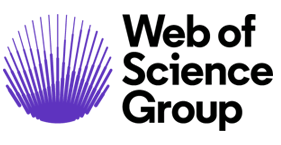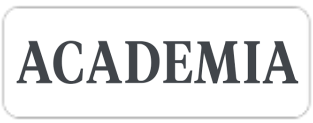Nonlinear Finite Element Analysis of I-Steel Beam with Sinusoidal Web
Downloads
Doi:10.28991/CEJ-2025-011-03-08
Full Text:PDF
Downloads
[2] Zhu, B.-L., Guo, Y.-L., Zhou, P., Bradford, M. A., & Pi, Y.-L. (2017). Numerical and experimental studies of corrugated-web-connected buckling-restrained braces. Engineering Structures, 134, 107–124. doi:10.1016/j.engstruct.2016.12.014.
[3] Dubina, D., Ungureanu, V., & Gí®lia, L. (2015). Experimental investigations of cold-formed steel beams of corrugated web and built-up section for flanges. Thin-Walled Structures, 90, 159–170. doi:10.1016/j.tws.2015.01.018.
[4] EN 1993-1-5. (2006) Eurocode 3: Design of steel structures - Part 1-5: General rules - Plated structural elements. European Committee for Standardization, Brussels, Belgium.
[5] Aydin, R., Yuksel, E., Yardimci, N., & Gokce, T. (2016). Cyclic behaviour of diagonally-stiffened beam-to-column connections of corrugated-web I sections. Engineering Structures, 121, 120–135. doi:10.1016/j.engstruct.2016.04.036.
[6] Hassanein, M. F., Elkawas, A. A., El Hadidy, A. M., & Elchalakani, M. (2017). Shear analysis and design of high-strength steel corrugated web girders for bridge design. Engineering Structures, 146, 18–33. doi:10.1016/j.engstruct.2017.05.035.
[7] Jiao, P., Borchani, W., Soleimani, S., & McGraw, B. (2017). Lateral-torsional buckling analysis of wood composite I-beams with sinusoidal corrugated web. Thin-Walled Structures, 119, 72–82. doi:10.1016/j.tws.2017.05.025.
[8] Papangelis, J., Trahair, N., & Hancock, G. (2017). Direct strength method for shear capacity of beams with corrugated webs. Journal of Constructional Steel Research, 137, 152–160. doi:10.1016/j.jcsr.2017.06.007.
[9] Chen, J., & Young, B. (2006). Mechanical properties of cold-formed steel at elevated temperatures. International Specialty Conference on Cold-Formed Steel Structures, 26-27 October, 2006, Orlando, United States.
[10] Johansson, B., Maquoi, R., Sedlacek, G., Müller, C., & Beg, D. (2007). Commentary and worked examples to EN 1993-1-5 Plated Structural Elements. JRC scientific and technical reports, The European Convention for Constructional Steelwork (ECCS), Aachen, Germany.
[11] Eldib, M. E. A. H. (2009). Shear buckling strength and design of curved corrugated steel webs for bridges. Journal of Constructional Steel Research, 65(12), 2129–2139. doi:10.1016/j.jcsr.2009.07.002.
[12] Balaji, E., Senthil Selvan, S., & Surya Prakash, L. (2017). Experimental study on light guage steel beam infilled with nano-silica concrete. International Journal of Civil Engineering and Technology, 8(4), 945–957.
[13] Basiński, W., & Kowal, Z. (2008). The shear resistance of girders with corrugated web. InŠ¼ynieria i Budownictwo, 64(4), 197-200. (In Polish).
[14] Basiński, W., & Kowal, Z. (2013). The influence of the stiffness of end stiffeners on critical shear resistance of corrugated web of girders. Konstrukcje Stalowe, 3, pp. 50–54. 2013. (In Polish).
[15] Basiński, W. (2016). Analysis of Oscillatory Motion of Sin Girders with Semi rigid Joints. Architecture, Civil Engineering, Environment, 9(4), 55–65. doi:10.21307/acee-2016-052.
[16] Höglund, T. (1997). Shear buckling resistance of steel and aluminium plate girders. Thin-Walled Structures, 29(1–4), 13–30. doi:10.1016/s0263-8231(97)00012-8.
[17] Malik, H. S., Al-Asadi, A. K., Abdullah, M. D., & Kadhim, A. F. (2024). Experimental and Analytical Study of the Behavior of Corrugated Sandwich Steel Beams with Different Corrugation Shapes. Mathematical Modelling of Engineering Problems, 11(10), 2646–2656. doi:10.18280/mmep.111006.
[18] Li, X., Yang, T., Zhang, Y., Zhang, Y., & Shen, T. (2021). Flexural Behavior of Innovative Posttensioned Composite Beams with Corrugated Steel Webs. Advances in Materials Science and Engineering, 2021(1), 5512782. doi:10.1155/2021/5512782.
[19] Ammash, H. K., & Al-Bader, M. A. (2021). Shear Behaviour of Steel Girder with Web-Corrugated Core Sandwich Panels. IOP Conference Series: Materials Science and Engineering, 1090(1), 012017. doi:10.1088/1757-899x/1090/1/012017.
[20] Kadhim, A. W., & Ammash, H. K. (2021). Experimental study of encased composite corrugated steel webs under shear loading. Journal of Physics: Conference Series, 1895(1), 12062. doi:10.1088/1742-6596/1895/1/012062.
[21] Feng, L., Yang, H., Sun, T., & Ou, J. (2024). Experimental and numerical studies on cyclic behavior of stiffened corrugated steel plate shear walls with different corrugation orientations. Earthquake Engineering and Structural Dynamics, 53(8), 2511–2531. doi:10.1002/eqe.4123.
[22] Sayed, A. M., Elaraki, Y. G., & Elalaoui, O. (2022). Experimental and Numerical Analysis of Steel Beams' Efficiency with Different Shapes of Corrugated Webs under Free Vibrations. Metals, 12(6), 938. doi:10.3390/met12060938.
[23] Karote, A., Ghude, A., Fulpagare, V., Jadhav, K., & Patil, V. (2019). Experimental Investigation of Steel Beam with Trapezoidal Corrugated Web Beam. International Research Journal of Engineering and Technology, 6(4), 4347–4350.
[24] Manoj Kumaar, C., Dhaarini, S. T., Rithish, S., & Thirunavukarasu, A. (2024). Flexural Behaviour of Corrugated Web Beams Using Cold-Formed Steel Sections. Emerging Trends in Composite Structures, ICC IDEA 2023, Lecture Notes in Civil Engineering, 387. Springer, Singapore. doi:10.1007/978-981-99-6175-7_24.
[25] Jumaa, M. I., & Majeed, F. H. (2024). Modeling of Composite Box Girder with Concrete”Corrugated Steel Webs of Base Plate. Mathematical Modelling of Engineering Problems, 11(11), 2944–2952. doi:10.18280/mmep.111107.
[26] American Institute of Steel Construction. (1989). Specification for Structural Steel Buildings. Allowable Stress Design and Plastic Design. American Institute of Steel Construction, Chicago, United States.
[27] Cserpes, I., Habashneh, M., Szép, J., & Movahedi Rad, M. (2024). Innovative Design Techniques for Sinusoidal-Web Beams: A Reliability-Based Optimization Approach. Buildings, 14(4), 1051. doi:10.3390/buildings14041051.
- Authors retain all copyrights. It is noticeable that authors will not be forced to sign any copyright transfer agreements.
- This work (including HTML and PDF Files) is licensed under a Creative Commons Attribution 4.0 International License.![]()














